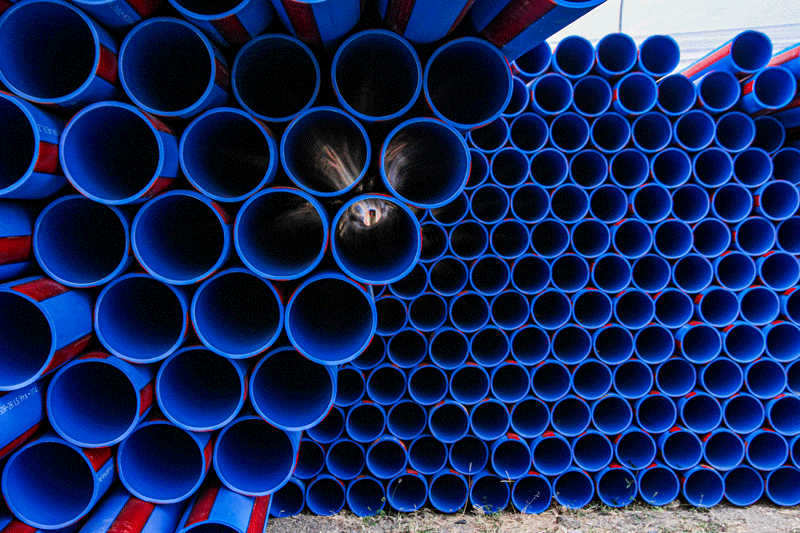Smart coatings in the pipeline
A British-Australian collaboration has developed a polymer surface coating that offers multifunctional protection for different surfaces and can also capture toxic metal traces.

The smart coating, made by researchers at Flinders University, Australia, and the University of Liverpool, UK, can be easily repaired, with scratches and damage fixed through the application of heat. It is said to prevent metal corrosion, solvent damage in PVC pipes, and acid and water damage on concrete surfaces. It can also capture mercury from oil and water.
The coating is made from elemental sulphur and dicyclopentadiene (DCDP), which is a waste product of oil refining. Three grammes of DCDP and sulphur are added to a 20ml glass vial with a magnetic stirrer bar. The vial is sealed with a rubber septum and purged with nitrogen gas for 20 minutes. A stream of nitrogen is maintained throughout the reaction. The vial is then placed in a hot-block pre-heated to 140°C, and the reaction is stirred at 500rpm for two hours.
The team has found that synthesising S-DCDP is safer than previous attempts by using a lower temperature to prevent runaway reactions, although they did initially encounter some mass transfer issues. The coating is repairable due to the sulphur-sulphur bonds that can be broken and reformed.
The mercury uptake has been tested using 100g of S-DCDP coated silica gel, which removes 93% of mercury (45ml, 5ppm of mercury) within two hours.
Max Mann, Flinders University Project Leader, says that the team had general mercury remediation in mind, for scenarios where mercury is in an aqueous or organic mixture or a combination of both, such as a diesel and water sample. ‘The oil and gas sector has many challenges in mercury capture. At the same time, we are repurposing a petroleum-derived product in surplus (sulphur) to make the mercury sorbent,’ Mann says.
For testing, aluminium pieces were covered with the coating and 5µl of hydrochloric acid was added to the surface and left for three hours, while another uncoated piece was used as a control. While there was corrosion to the uncoated piece, no damage or reaction was observed on the coated samples.
To test acid resistance of cement, 25µl of water and hydrochloric acid (37%) were put on different cement sheets, one with the coating and one without. After two hours of exposure, both the water and acid had been absorbed by the cement, while no absorption or damage was observed on the coated cement.
To test solvent resistance, 600ml of tetrahydrofuran (THF) was passed through a coated and uncoated PVC pipe over two hours. The THF from the uncoated structure was cloudy with dissolved pipe, while the other fluid was clear, without solute.
To protect different surfaces, Mann describes that ‘the oligomer can be dissolved in an organic solvent and the coating can be sprayed on, or the material to be coated can be dipped into the polymer solution. The oligomer can be placed onto the sample as a paste to be coated before being cured at 140°C to give a crosslinked coating’.
He says, ‘I believe there is the option to coat other materials as well, like silica (and potentially other glasses), plastics and ceramics.’
He does not see cost as an issue to commercialisation since sulphur and DCDP are affordable, but thinks upscaling might be challenging. More tests need to be done to determine the longevity and degradation products of the coating.

